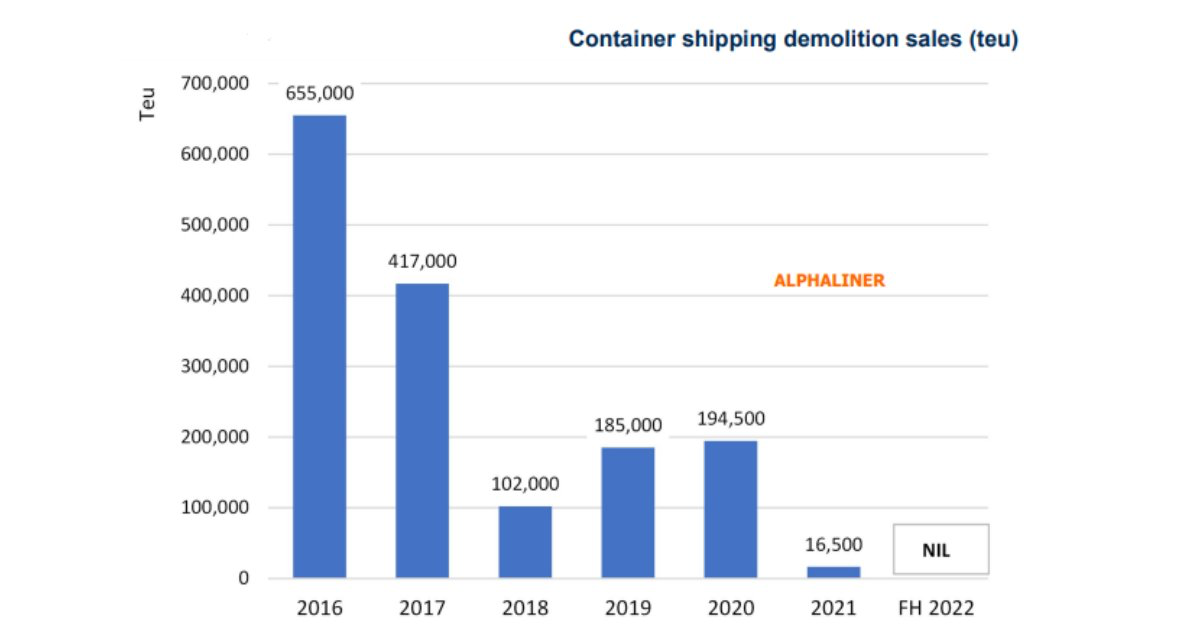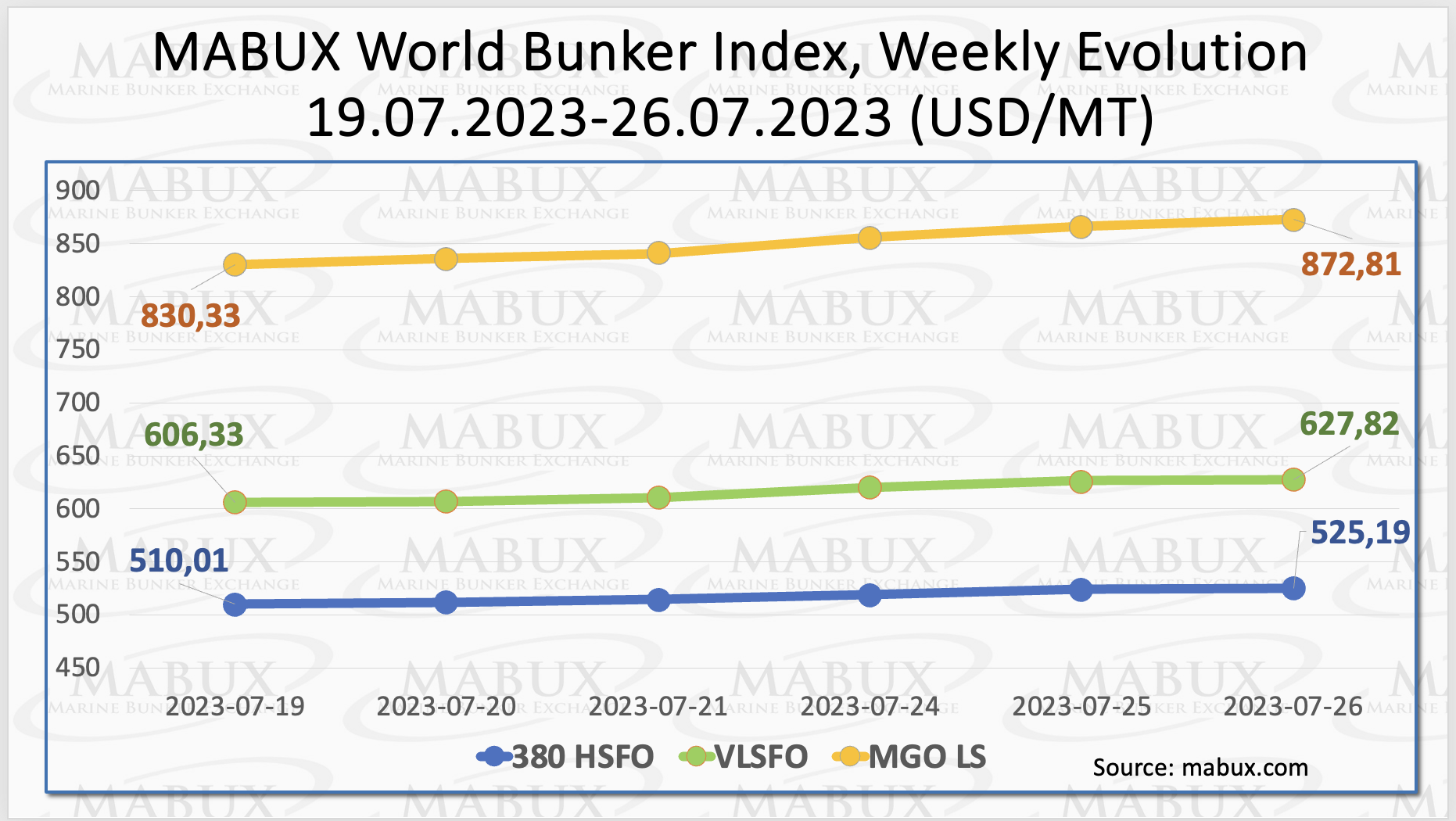
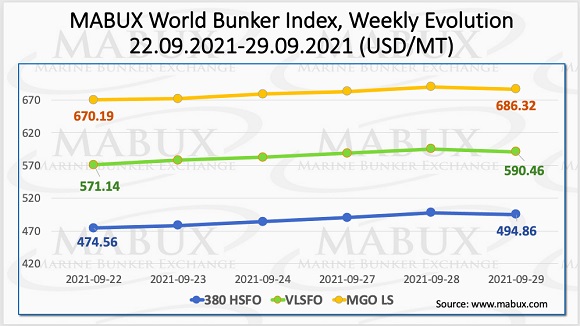
On a Week 39, the MABUX World Bunker Index showed firm upward evolution. The 380 HSFO Index rose by 20.30 USD: from 474.56 USD / MT to 494.86 USD / MT, the VLSFO Index increased by 19.32 USD: from 571.14 USD / MT to 590.46 USD / MT, while the MGO index added 16.13 USD (from 670.19 USD / MT up to 686.32 USD / MT).
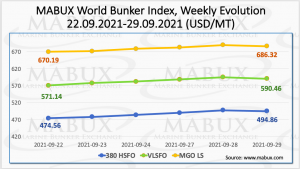
The MABUX ARA LNG Bunker Index, calculated as the average price of LNG as a marine fuel in the ARA region, did not have any significant changes in the period from 22 to 29 September and showed a moderate decline from 1051.49 USD / MT to 1046.11 USD / MT (minus 5.38 USD). At the same time, the average LNG Bunker Index decreased by 5.27 USD compared to the previous week (1049.24 USD / MT versus 1054.51 USD / MT). The average MGO LS price in Rotterdam increased by 19.67 USD / MT over the same period, and the average price difference between bunker LNG and MGO LS in Rotterdam fell by 24.94 USD, breaking the 450 USD mark and approaching 400 USD level: (427.57 USD / MT versus 452.51 USD / MT last week). The surge in natural gas prices is still due to a massive supply shortage in Europe, a situation that is quickly spilling over into other countries and other markets—including the coal and oil markets as demand for power exceeds supply. The natural gas crisis is set to intensify as winter heating season approaches, with supplies insufficient to keep up with current demand, let alone build stockpiles for what will be increased demand in the cold season. LNG bunker price indices are available in the LNG Bunkering section on www.mabux.com.
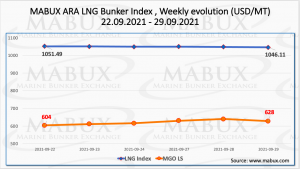
The average weekly Global Scrubber Spread (SS) – the difference in price between 380 HSFO and VLSFO – has not changed significantly over the week: $ 97.72 (versus $ 96.79 last week). The average weekly SS Spread in Rotterdam decreased slightly but remains firmly above the $ 100 mark: $ 108.33 (versus $ 112.83 last week, minus $ 4.50). The average weekly SS Spread in Singapore also showed a moderate decline and stays below the $ 100 mark: $ 77.67 versus $ 85.33 last week (minus $ 7.66). More information is available in the Differentials section of www.mabux.com.
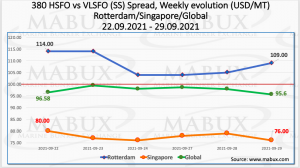
Correlation of MABUX MBP Index (Market Bunker Prices) vs MABUX DBP Index (MABUX Digital Benchmark) in the four global largest hubs over the past week showed that 380 HSFO fuel was overvalued in all selected ports, with the exception of Houston, where the Index recorded an underpricing by $ 14 ( vs. minus $ 7 a week earlier). In other ports, the 380 HSFO overcharge margins were: in Rotterdam – plus $ 4, in Singapore – plus $ 41 and in Fujairah – plus $ 39.
VLSFO fuel grade, according to the MABUX MBP / DBP Index, was overvalued in only two ports out of four: in Singapore by plus $ 1 and in Houston by plus $ 6. In Rotterdam, the MABUX MBP / DBP Index showed VLSFO underestimation by $ 2 and in Houston – 100 -procent correlation. In general, the VLSFO market prices at all ports almost completely follow the DBP Index.
MGO LS remains the only fuel which was underestimated by the MABUX MBP / DBP Index at all selected ports: minimum value in Houston (minus $ 18), maximum value in Fujairah (minus $ 42).

Developed by a multi-stakeholder taskforce brought together by the Getting to Zero Coalition, signatories of the Call to Action for Shipping Decarbonisation are pressing governments to ‘deliver the policies that will supercharge the transition and make zero emission shipping the default choice by 2030.’ The initiative highlights the work that the private sector is already engaged in to drive forward shipping’s energy transition. This includes investing in RD&D and pilot projects, ordering and building vessels operated carbon neutrally, buying zero emission shipping services, investing in the production of net-zero emission fuels, investing in port and bunkering infrastructure, and assessing and disclosing the climate alignment of shipping related activities.
Source: MABUX











